
Visit the Church of Peace in Jawor
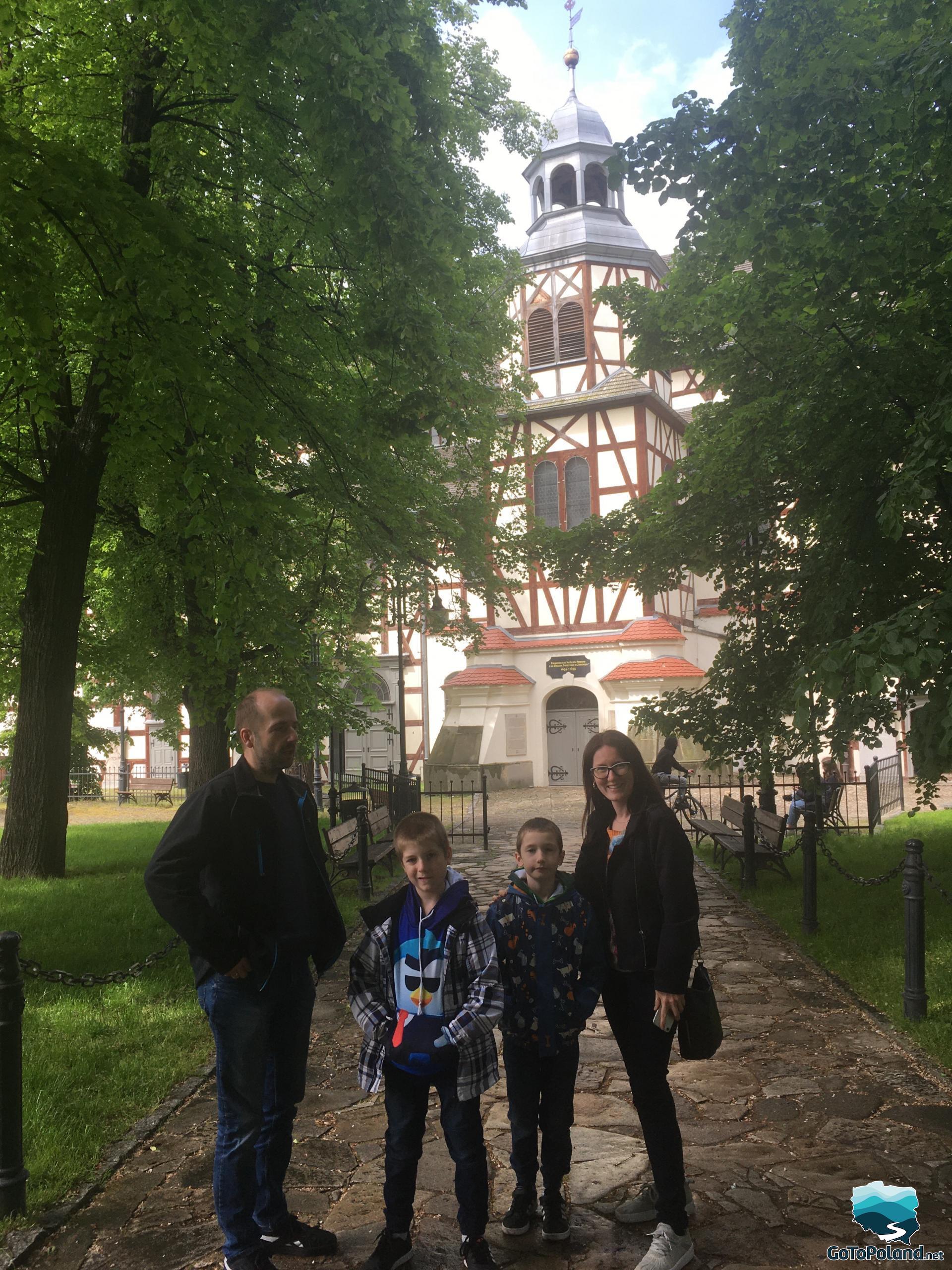
This is the second church on the UNESCO list I've been to. It is similar to the church in Świdnica - maybe more modest, but also worth seeing. These churches are unique. The third church of peace in Głogów has not survived to our times - it was destroyed during the fire in 1758.
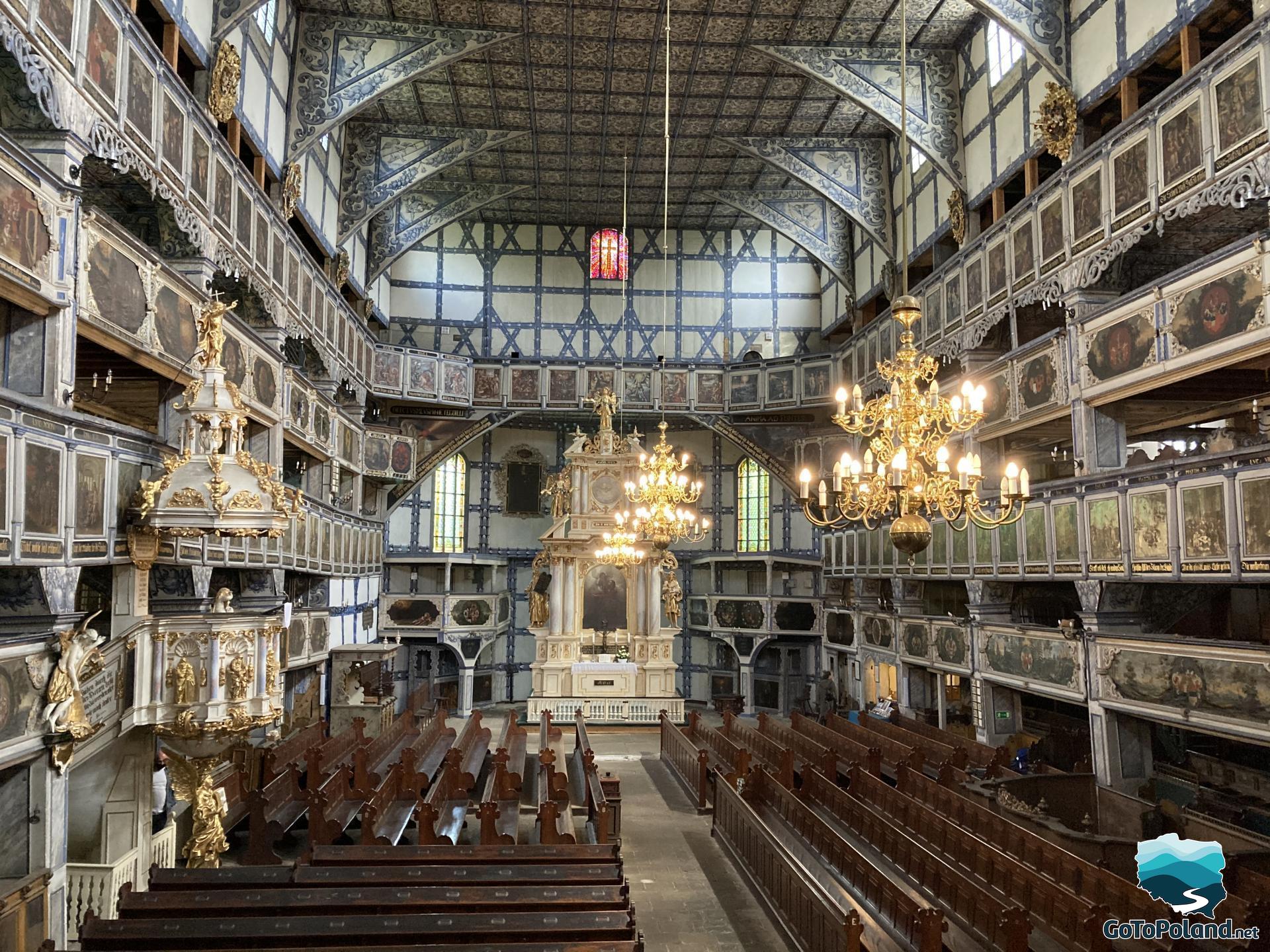
The history of the founding of this church is also similar. A delegation of the Jaworzans went to Vienna to get permission from the emperor. In September 1652, the emperor approved the construction of the temple. However, he set conditions. The newly built church was to be built outside the city walls. The appearance of this building could not have had a tower. Only perishable materials were allowed for its construction: straw, wood, clay, sand. So you can see that it was similar to the Church in Świdnica. The location of the church outside the city walls was supposed to suggest that the Evangelical confession exists on the margins of social life. The lack of the tower of the new church meant that the building grew into a symbol of submission to the emperor. In December 1655, priest Christian Hoppe consecrated the church. The temple could accommodate 6,000 people in the main nave and two side aisles.
How far is it from Warsaw to Jawor?
The distance from Warsaw to Jawor is 422 km.
More information about Jawor Church of Peace you can find on Wikipedia and UNESCO site
The interior is beautiful, made of wood. The main altar, 9.2 m high and 5 m wide, was founded by the Hochberg family in 1672

The organ was built for the first time in 1663 by Johann Hofrichter, a constructor from Legnica. The organs required frequent and costly repairs, so in 1855 they were replaced with new ones.

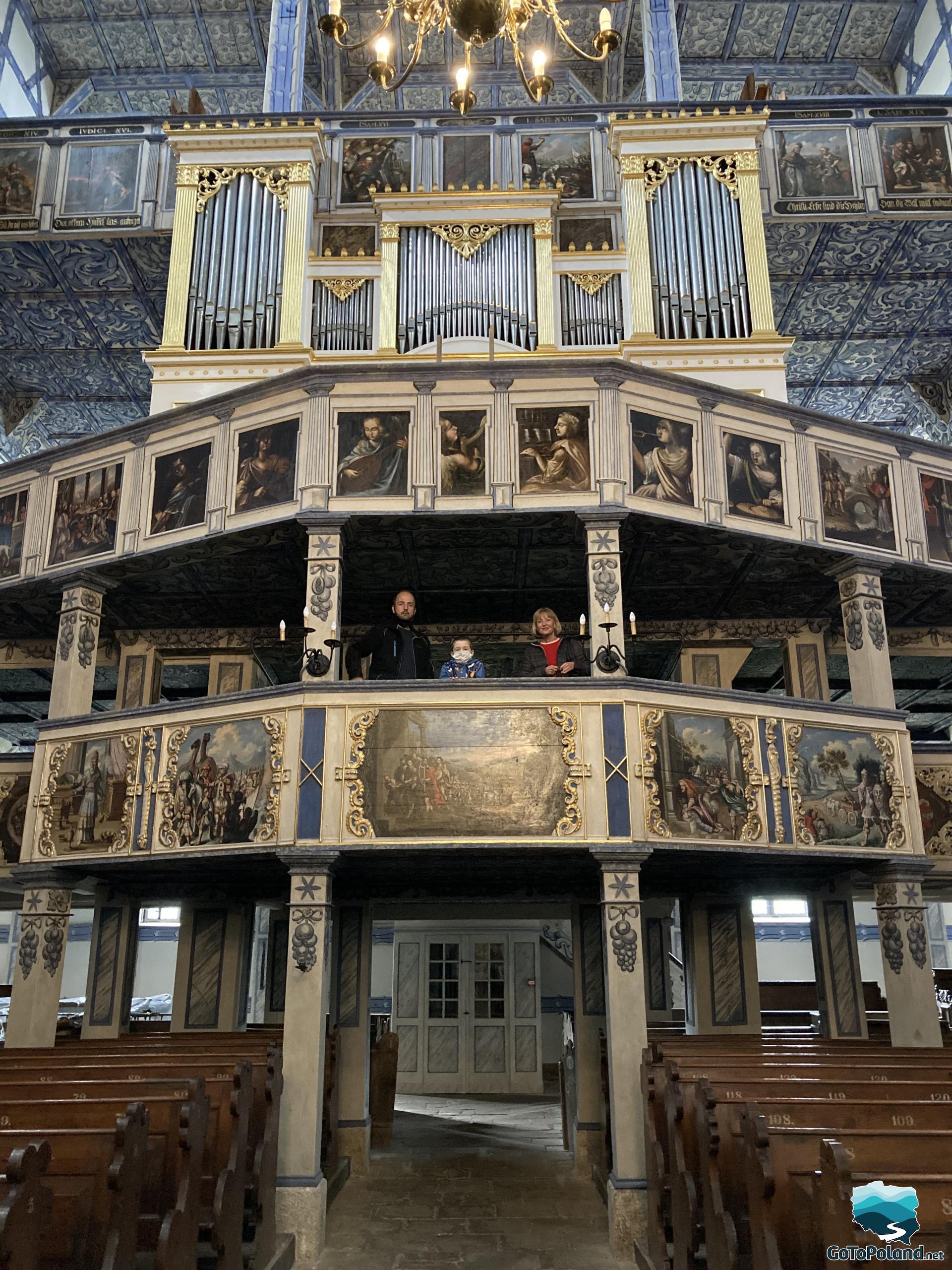

I can't say what it is….. for sure it is some historic monument
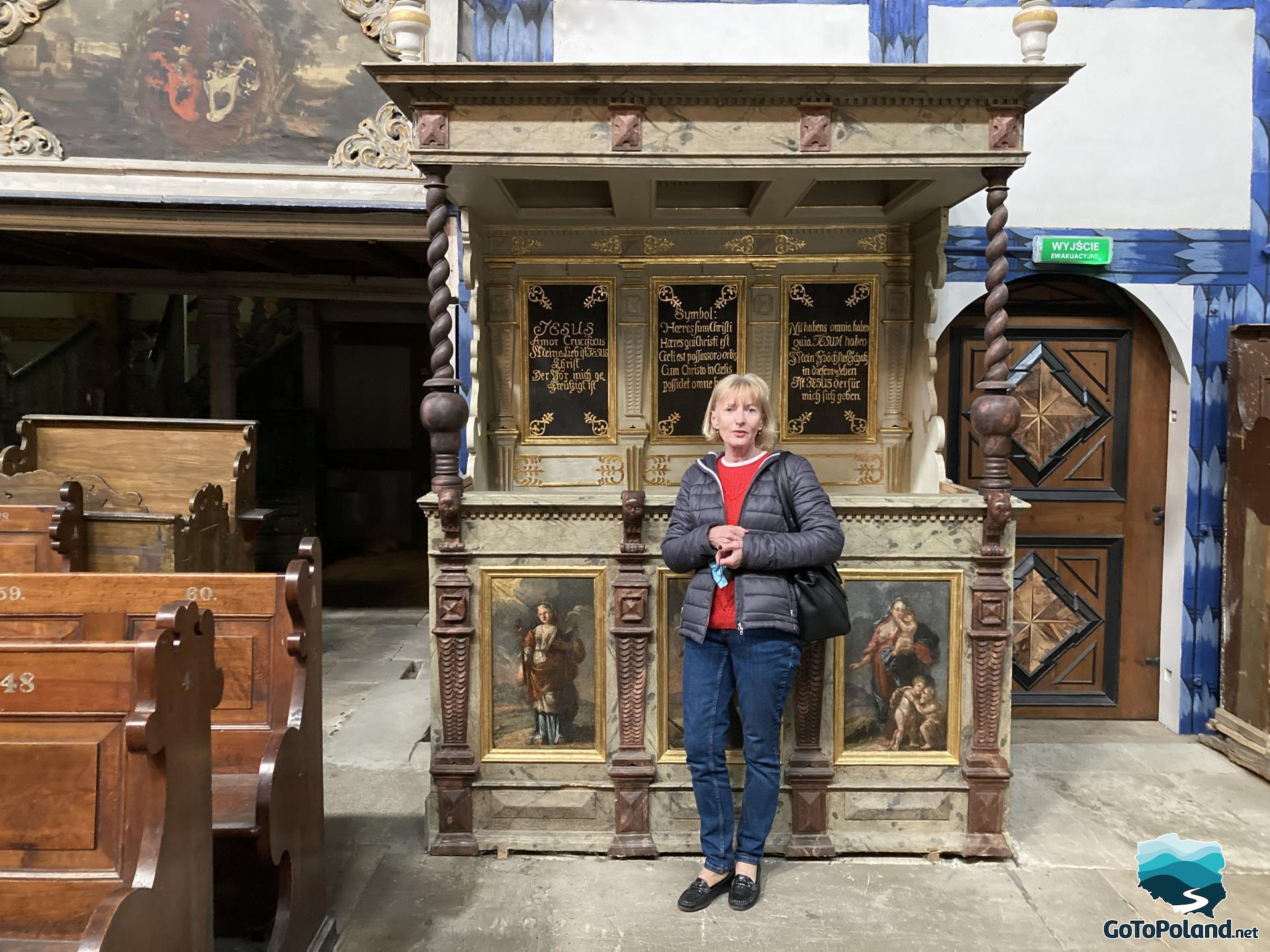
The first element of the decor that appeared inside the church was the baptismal font. It was founded in 1656 by Georg von Schweinitz. By the way, look at those amazing walls and upper gallery

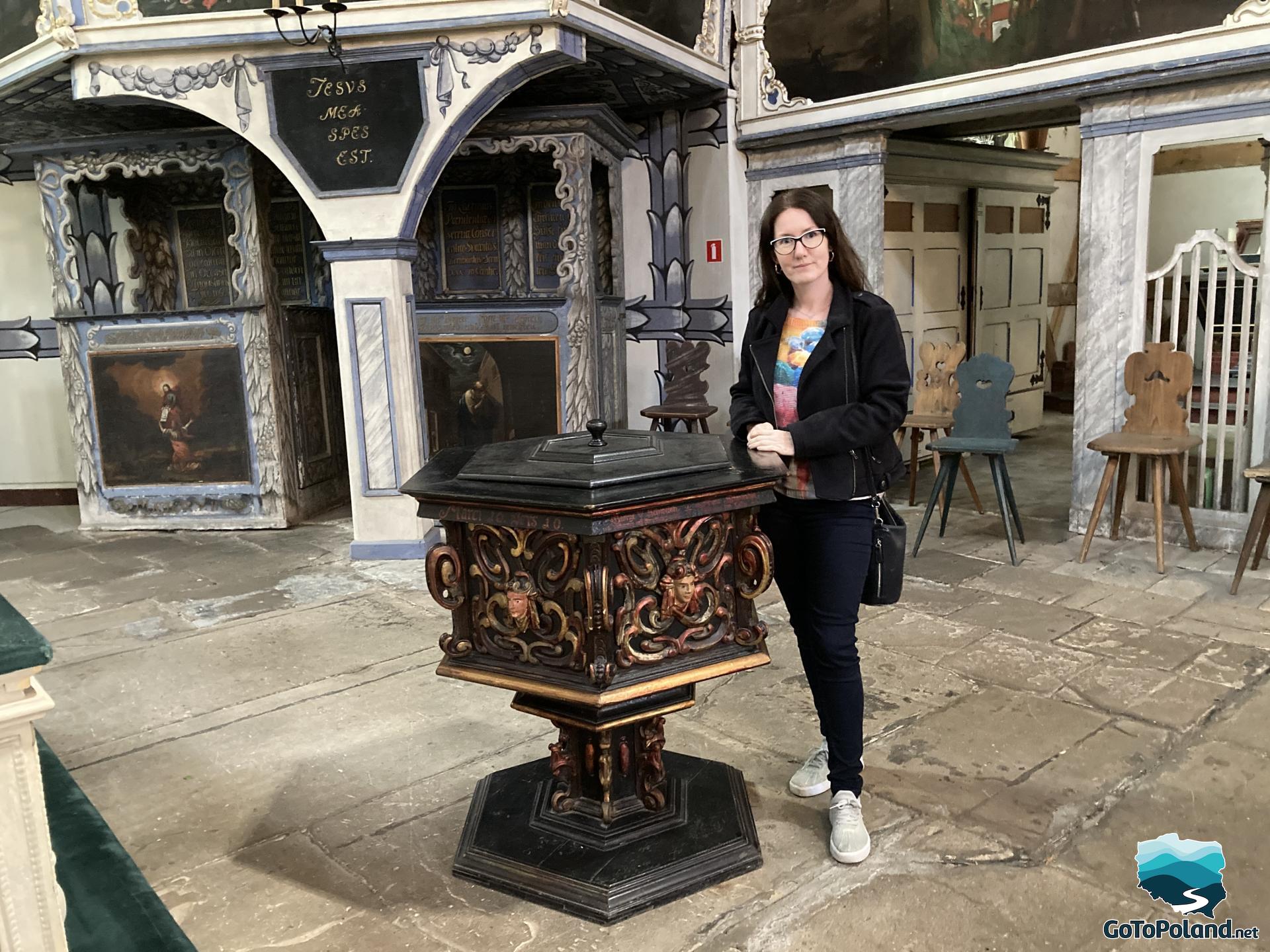
In September 1670, members of the parish council commissioned Matthaus Knotte, a sculptor from Legnica, to make a pulpit according to the model presented by him earlier. The chalice of the pulpit rests on the sculpture of an angel holding an open Gospel in his hand. Legend says that this angel is "life-size", so tourists from all over the world come to see how big the angels are.
The richly decorated balustrade of the pulpit shows six figures from the Old and New Testaments. On the canopy of the pulpit is the figure of the Resurrected Christ, who holds a flag symbolizing his victory over death. Under the finial of the pulpit, there is a sculpture showing a flying dove - a symbol of the Holy Spirit, which is supposed to enlighten the preaching priest. The work on gilding the pulpit was entrusted to George Flegel. The historic pulpit was restored in 2005.
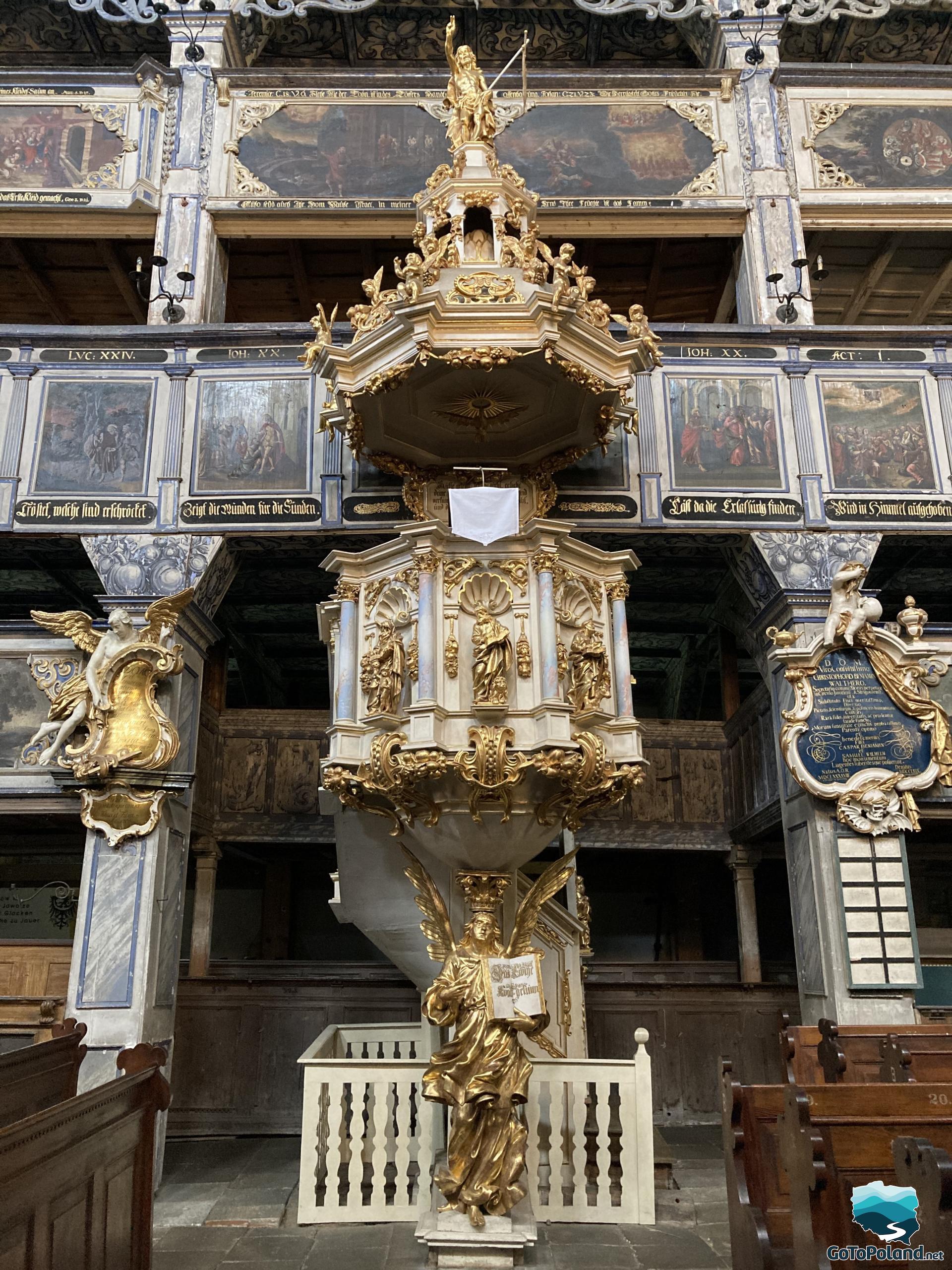
A historic ornament outside the church
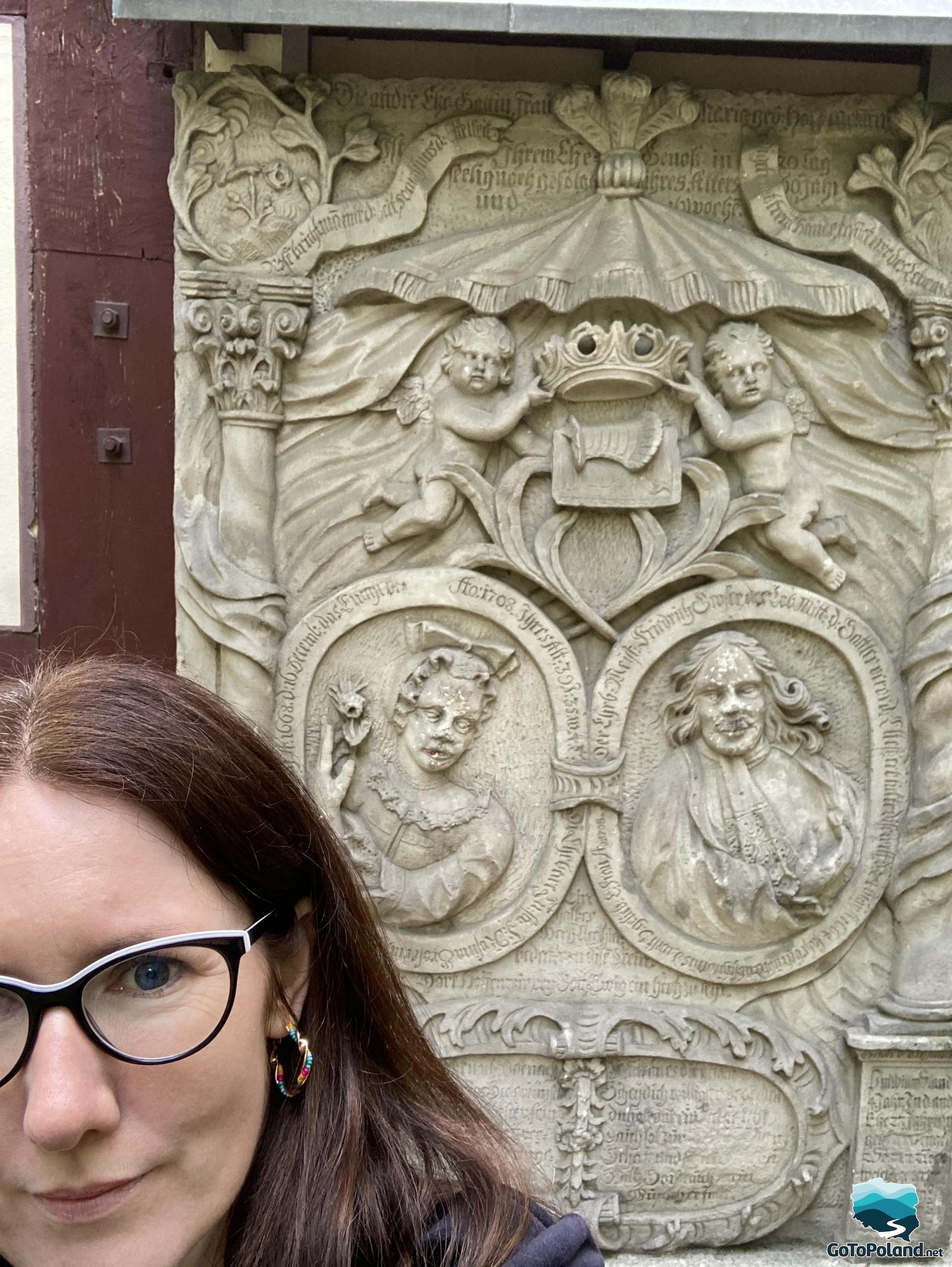
How to get to Church of Peace in Jawor?

